ARCHIVE: Active Learning Symposium
|
|||||||||||||||||||||||||||||||||||||||||||||||||||||||||||||||||||||||||||||||||||||||||||||||||||||||||||||||||||||||||||||||||||||||||||||||||||||||||||||||||||||||||||||||||||||||||||||||||||||||||||||||||||||||||||||||
CETL ARCHIVESActive Learning |
|
SEMESTERSSpring 2022Spring 2021 Spring 2020 |
|
| |||
Spring 2022 |
|||
|
|
Group Exams: How to Effectively Incorporate Active Learning into AssessmentDaniel J. RobertsonMany courses assess student competency through individual examinations, in which the student completes an exam without the help of any external resources. This is in sharp contrast to the “real world” in which most professionals are required to solve problems collaboratively. To bridge this divide and improve student outcomes two-stage examinations are becoming increasingly popular in Academia. In two-stage examinations, students independently complete a test and then immediately complete the same test in small groups of three or four. Student grades are calculated based on a combination of individual and group exam scores. In this interactive workshop, we discuss how to effectively implement two-stage exams and provide evidence supporting their use in courses that implement active learning strategies. Participants will work on developing a two-stage exam for one of their courses during the workshop and are therefore requested to bring an exam with them if possible. RESOURCE MATERIALS
|
||
|
|
Utilizing Jigsaw for Group Collaboration and Active LearningJuhee Kim, Kirsten Pomerantz & Elizabeth WargoJigsaw (Aronson et al., 1978) is a strategy that emphasizes cooperative learning by providing students an opportunity to actively help each other build comprehension. Each group member is responsible for becoming an “expert” on one section of the assigned reading material and then “sharing” it to the other members of the team. In this workshop participants will learn about how to use this method in different contexts as we share our examples of using the technique in online graduate and in-person undergraduate courses. In a graduate-level course, we applied the Jigsaw tool to effective group reading, reviewing, reflecting, and responding. It demonstrated that the participation at Jigsaw affected productive zoom meeting results and increased the student's satisfaction with the course. We will present how to design the course and engage students with Jigsaw through this workshop session as well as exhibit how to connect Jigsaw with zoom discussion for students' active learning experience. Utilizing the jigsaw technique in undergraduate teaching methods courses engages students in close reading, peer instruction, and an embodied experience of collaborative learning. We will present a structure for integrating jigsaw in live classes, including planning protocols, initiating and growing the routines, assessing student work (rubric and feedback) and their contributions to the class, and their immediate learning community. RESOURCE MATERIALS
|
||
|
The Write Response: Written Feedback Strategies to Inspire Revision and TransferJamaica RitcherTeachers often express feeling uncertain, discouraged, or overwhelmed when it comes to responding to student writing. This ambivalence can be exacerbated by the sense that, despite a teacher's considerable time and best intentions, students do not apply feedback to revision. Drawing on writing center and active learning praxis, this workshop will lead participants through activities that demonstrate how higher-order thinking practices like prioritizing, dialogic questioning, and reflecting motivate students to actively engage in their writing, resulting in more substantive draft revisions and transfer of new skills to future assignments. RESOURCE MATERIALS
|
||
|
|
The Art of ExplorationGregory Turner-RahmanI will explain how the use of project work— primarily the production of visual designs and stories—can facilitate a type of abductive reasoning that allows students to more profoundly explore concepts essential to making sense of complex issues. I describe a series of projects for a visual studies course catering to art and design students that is focused on the development of modern clinical practice and contemporary medical patient experiences. The discussions, concept mapping, and project work—including design fiction making—circumscribed key topics and motivated students to reveal thoughtful critiques and personal stories about those topics. Ultimately, they could better understand the breadth and complexity of experiences. RESOURCE MATERIALS
|
||
|
|
Developing a Program-Wide Longitudinal Assessment RubricDan Cordon & Sean QuallenOver the past several years the ME department has used a longitudinal rubric to assess students' progress from freshman to senior year. Come sit in with Dan Cordon and Sean Quallen to see briefly what went into this rubric and discuss with colleagues how to start creating your own. RESOURCE MATERIALS
|
||
|
Create Engaging Videos Using eGlass for Flipped ClassroomHanwen Dong & Terry SouleAmong several departments and colleges at the U of I, the library received a 50-inch eGlass transparent lightboard with the GEER grant in 2021. An eGlass is a transparent glass that allows instructors to write, draw, and annotate. The eGlass is equipped with a built-in camera and can capture the instructor's gaze, facial expressions, and gestures along with the writing and drawings in the same frame. The eGlass is a powerful tool that can be used synchronously via Zoom and asynchronously for flipped classrooms. In this workshop, the presenters will perform a live demonstration of using the eGlass and showcase some eGlass videos created for a computer science class. RESOURCE MATERIALS
|
||
|
|
Active Learning with Stories in the Second Language ClassroomAshley Kerr & Azusa TojoIn this workshop, we’ll discuss our experiences using stories in the Japanese and Spanish classrooms. Azusa Tojo will present a storytelling activity she uses in JAPN 102: Elementary Japanese II, which starts with students sharing stories with their partners and is followed by listening to their own recording, writing, revising, and re-recording. Ashley Kerr will discuss using creative writing in SPAN 302: Advanced Composition. In this activity, students have “story time” with children’s books in Spanish, examine and practice the use of storytelling devices and their particularities in Spanish, and then write, revise, and share their own short stories. These experiences have shown us that stories in the foreign language classroom serve to 1) engage students, 2) further language-learning and communicative goals, and 3) reduce stress and anxiety levels. This last point is particularly important as fear of “sounding stupid” or “saying something wrong” is often a major obstacle to second language learning. The workshop will conclude with discussion of how these storytelling activities and their benefits could also be applied to the non-second language classroom. RESOURCE MATERIALS
|
||
|
|
Active Learning for LifeAnn AbbottI teach courses in mathematics and statistics, often general education courses. Most students take the course to satisfy requirements. I have developed some strategies that have been successful in engaging students in the course material by making it "real" for them. I begin with real scenarios with intentional complexity beyond the scope of the course and ask students to provide their own examples of similar scenarios. Using student examples (different examples each class meeting), we decompose the complexity in the context of the course content. Using scenarios suggested by students helps them understand the topic and brings in rich discussions where students are able to learn with others and from others. Diversity is naturally included in the consideration of a variety of student examples. When students are able to "see" the course material within something they are already interested in, they develop a way of thinking that transcends the course itself in their approach to problem solving. |
||
|
|
Trauma-Informed Teaching: Creating Communities of CareHeather Ebba Maib & Laura HolyokeOver the last twenty years, there is an increasing body of research bringing attention to the impact early childhood trauma and adversity have on the ways people approach daily challenges and interpersonal relationships. While trauma-informed practices have been successfully implemented in the K-12 setting, we argue that institutions of higher education are well-positioned to address needs of adults who have experienced adversity as well as anxiety and toxic stress, much in the same way the K-12 system supports children. Even though trauma-informed practice was designed for children, we believe it is necessary for adults who bring maladaptive coping mechanisms into higher education organizations. This growing need is particularly timely as we navigate our future workplaces and learning communities. A trauma-informed approach shifts questioning from “What’s wrong with you?” to “What happened to you?” Such an approach removes blame from the person to the situation and helps those who have experienced trauma become open to their own self-awareness. In this session, we will explore ways to adopt a trauma-informed approach to our work and relational spaces in support of building communities of care. RESOURCE MATERIALS
|
||
|
|
Creating an interactive online and virtual learning environment with e-Glass and Zoom: quick, fun, effective and students don't mind when you mess up.Jaap VosIn this session, I will show participants how I use eGlass and Zoom to quickly create interactive content for both my online and virtual classes. I will share both my personal experiences as an instructor and the feedback from students. After that I will show how participants can use these two methods in their own classes, depending on their specific needs and their comfort level with technology. First, I will show how you can make virtual presentations much more active by simply using the "PowerPoint as a background" feature in Zoom with a $25 green screen. Next, I will show how you can use eGlass either as a virtual writing board or as a way to interact with your PowerPoint slides. RESOURCE MATERIALS
|
||
|
|
How Leadership Can Help with Active Learning: Priorities and FundingDan EwartThe VP for IT and CIO, Dan Ewart, will share his views on institutional support for active learning then ask the audience, through discussion and polls, how the university should prioritize efforts in this area. Time for questions and answers will be provided. |
||
|
Active Learning, the Socratic Method, and the Evolution of the Law School ClassroomStephen MillerSince the late 19th century, the legal classroom has been dominated by the Socratic Method. That is changing; indeed, the law school classroom may have changed more in the last decade than it did in the preceding century. In this session, I will discuss several active learning approaches I utilize alongside the Socratic Method to supplement and expand traditional methods of legal analysis and training. These methods include a variety of formative assessments, document drafting, and role playing that give students early indicators of their subject matter knowledge and ways to tier growth for those struggling with basic material. Participants will learn how to create manageable formative assessments and provide feedback that is not overly burdensome. RESOURCE MATERIALS
|
||
|
|
Hands-On History: Active Learning in the ArchivesRobert PerretThe University of Idaho houses and preserves 36,000 square feet of unique historical artifacts in our Special Collections and Archives. History impacts and connects most academic disciplines. More important, local history allows students to see themselves as important to Idaho's past and future. This workshop will explore possibilities for incorporating archival materials into your coursework. You'll gain awareness of the materials available through Special Collections and the instructional support our department can provide. You'll also walk away with ideas for getting your students hands-on with history. RESOURCE MATERIALS
|
||
|
Centering the Student in a General Education Introduction to Art CourseLauren McClearyDuring this workshop, I will share some of the ways I have been working to evolve ART 100 into an accessible, sustainable, and student-centered course using the Virtual Meeting Platform, Flipgrid, Open Education Resources, and Choice-Based assignments. I will also engage participants in Visual Thinking Strategies (VTS) exercises to demonstrate the value of close looking for deeper understanding. Attendees will gain insight into resources and strategies to center the student in a large "lecture" course. RESOURCE MATERIALS
|
||
Spring 2021 |
|||
|
|
Overcoming Obstacles to Remote Learning: The Quick Redesign of the Library’s First-year InstructionDiane Prorak, Hanwen Dong, & Perri MorenoDuring the last year, librarians at the University of Idaho Library faced several instruction-related challenges due to the COVID-19 pandemic, especially for our collaboration with the first-year composition courses. We redesigned and repurposed our traditional, face-to-face library instruction methods for use in an online, interactive format that can later be readapted for the return to in-person instruction. In this presentation, we will talk about our tutorial development process and our interactive teaching methods. RESOURCE MATERIALS |
||
|
What Do You Consider When You’re Considering Moving to Canvas?Douglas HabibThis session will provide a brief preview of Canvas and the types of things faculty might consider as they explore Canvas and give feedback to the administration on whether or not to move to that LMS. The aim is to highlight elements of Canvas faculty should investigate, such as the look and feel of the LMS, common tools, and Canvas Help resources. RESOURCE MATERIALS
|
||
|
Freshmen Year Engineering ExperienceSteven Beyerlein & Patricia ColbergThis workshop will share best practices that have emerged from a year-long learning community of introduction to engineering faculty in the College of Engineering. Our adopted model for freshman student development is based on transformation of the whole self that includes balanced attention to growth of academic identity, mastery of STEM knowledge, cultivation of life-long learning capabilities, and culturally relevant authentic learning experiences. These four aspects that are identified with student roles of knower, learner, performer, and self-grower. These roles are supported by instructor interactions associated with facilitating active learning, making constructive interventions focused on lifelong learning skills, creating a diverse/inclusive learning environment, and mentoring/coaching. RESOURCE MATERIALS |
||
|
|
The Future of HyFlex: A Panel Discussion on Lessons Learned and What Will SurvivePanelists: Rob Ely, Stacy Isenbarger, Dan Cordon, Dan Eveleth, & Diane CarterThis panel will discuss what instructors and students learned from the HyFlex experience and propose what flexible course delivery might look like moving forward. How do we find balance amongst our assumed teaching expectations? What insights do we have to improve? How do you see this changing the course of higher ed? RESOURCE MATERIALS
|
||
|
Zoom: What’s New? What’s Coming? How/Where Can I Move My Recordings?Cassidy HallZoom has added many new features that you may or may not have noticed. This session will highlight those new features and include what to expect from the administrative end of Zoom to improve meetings and webinars. We’ll also demonstrate how to download recordings from Zoom and how to save them to OneDrive. In the near future, all Zoom recordings will be automatically deleted after 9 months. This session will prepare you for this move so that you don’t lose any important recordings. RESOURCE MATERIALS |
||
|
The Arts Modifications During the PandemicVanessa Sielert & Spencer MartinDuring this session, we’ll hear about the Lionel Hampton School of Music’s efforts to adapt to unforeseen needs during the pandemic. Director Vanessa Sielert and Associate Director for Recruitment and the Director of the Vandal Marching Band Spencer Martin will tell us the story of how their school approached the dilemma and succeeded in continuing to deliver instruction. RESOURCE MATERIALS
|
||
|
|||
|
Sound, Lights, Camera, Action: How to Turn Your (Home) Office into a Virtual ClassroomJaap VosIn the past month we have had to move our courses online or meet virtually with our students. Online and virtual teaching can be rewarding but having the wrong hardware and software set up can make it a very frustrating and time-consuming experience. Since most of our computers are setup with different priorities in mind, you probably struggled a bit in the past couple of weeks. In this session, Jaap will show some simple things that you can do to improve the experience for both you and your students. After going over some of the basic things that you can do in your home, he will take it a step further and show you how you can relatively easy (and without expensive equipment) create a virtual studio that will minimize your negative experiences and make developing and teaching online and virtual courses fun. Set ups will cover the range from a solid set up for the most basic Zoom recorded lecture to a set up that involves using a light board, green screen and post production editing. RESOURCE MATERIALS |
||
|
Using Lifelong Learning Skills in Course & Activity PlanningSteven BeyerleinAs educators, we have both learning and growth goals for our courses. These should include disciplinary knowledge/skills as well as lifelong learning skills that can enrich both formal and informal learning. This workshop features use of a recently published classification system to extract developmentally appropriate learning skills for emphasis in a particular course. Participants will also examine how these skills can be embedded in activity design/facilitation. RESOURCE MATERIALS |
||
|
|
Simplify Managing AccommodationsAmy Taylor & Eric MatsonThe Center for Disability Access and Resources (CDAR) will provide a brief overview of changes in the accommodation process and tools available for faculty managing student accommodations. Participants in this session will learn tools to simplify managing accommodations within the CDAR Access Faculty Portal. RESOURCE MATERIALS |
||
|
How Do We Assess Design Skills Across the Curriculum?John Crepeau, Mike Maughan, Tonia Dousay, & Cassidy HallThe Department of Mechanical Engineering created a rubric to assess design skill development throughout their undergraduate curriculum. The design faculty, including John Crepeau and Mike Maughan, spent a year refining the rubric that faculty have been using for four years to continuously measure student performance, and the Doceo Center's Cassidy Hall and Tonia Dousay are now assisting with evaluating this tool. This presentation will demonstrate how rubrics can be used with any design program and discuss how other programs may want to adapt the rubric. RESOURCE MATERIALS |
||
|
Turning a Guest Lecture into a Guest Learning ActivityDiane Prorak, Perri Moreno, Robert Perret & Sarah VanGundyWhen you are presenting to a room of unfamiliar faces, it can be challenging to move out of lecture mode and get learners working together. Library faculty teach many guest sessions for other instructors' courses, so we have developed a number of quick approaches to active learning that you can use to keep participants awake even if you don't know their names. See how we use physical objects, group activities, and technology to turn talk into action! RESOURCE MATERIALS |
||
|
If You Can't Explain it Simply, You Don't Understand it Well Enough: Promote Active (and Deeper) Learning with 'Pecha Kucha' and 'Ignite' Student PresentationsVanessa BottsThis workshop is intended to encourage/demonstrate Pecha Kucha and Ignite style presentations as an alternative to traditional PowerPoint student presentations for both face-to-face and online classrooms. These styles of presentations promote deeper learning and interaction thanks to their format which consists of 20 image slides, with little or no text, where presenters have between 15 and 20 seconds to 'speak' rather than 'read' about their work. Without text to read from and with slide time constraints, presenters will have to know the material well enough to explain it. These presentations are more informal in nature and thus promote dialogue and sharing of information rather than simply delivery of information. RESOURCE MATERIALS |
||
|
Otter Notetaking App for Transcription and ESL LearningYudi ZhuThis workshop will provide an introduction and demonstration of the Otter App, including the pedagogical application in English as a Second Language (ESL). Otter was initially designed for notetaking. Its audio recording and transcription function have potential pedagogical applications for research and in assisting ESL educators and learners in improving English speaking skills. RESOURCE MATERIALS |
||
|
Let the Games Begin! Role-Playing and Historical Immersion in the College ClassroomAlyson RoyIn most college classrooms, students receive their information passively. Reacting to the Past is a college curriculum that approaches pedagogy in a completely different way. Students learn through playing roles, informed by primary sources, in elaborate historical games; they learn skills—speaking, writing, critical thinking, problem solving, leadership, and teamwork. Students are faced with difficult and complicated situations where they are obliged to stick to the beliefs of their character but create their own means of expressing those ideas persuasively in speeches and papers. Unlike a play, these games do not have a fixed script or even a fixed outcome. This presentation will focus on my experiences using the Reacting to the Past curriculum at the University of Idaho in both lower and upper division classes, and demonstrate how active learning through role-playing can increase student participation while also helping them to grapple with difficult historical concepts and sources in the "safe" space of playing a role. It will also emphasize how this curriculum can work with both large and small classes, and how technology can be incorporated to enhance student experiences. RESOURCE MATERIALS |
||
|
Teaching Online Idea Sharing SessionPanelists: Dave Lien, Kenton Bird, Ryanne Pilgeram, Bob Stephens, Hosted by Brian SmentkowskiPlease join us to share your triumphs and tribulations with teaching online this semester. This will be an open session where anyone can choose to explain what went well or even contribute a lesson learned to the group. We will begin with a handful of examples from panelists and then open it up to others. It's been a particularly stressful semester, so let's celebrate our accomplishments! RESOURCE MATERIALS |
||

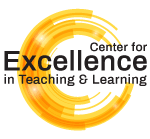

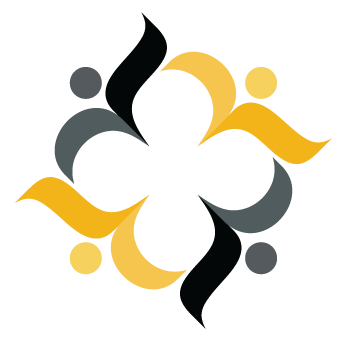


 Daniel J. Robertson
Daniel J. Robertson  Juhee Kim
Juhee Kim Kirsten Pomerantz
Kirsten Pomerantz Elizabeth Wargo
Elizabeth Wargo Jamaica Ritcher
Jamaica Ritcher

 Sean Quallen
Sean Quallen Hanwen Dong
Hanwen Dong Terry Soule
Terry Soule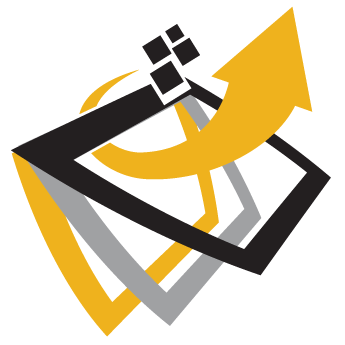
 Ashley Kerr
Ashley Kerr Azusa Tojo
Azusa Tojo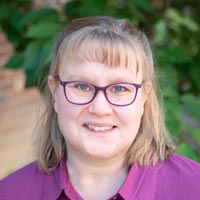 Ann Abbott
Ann Abbott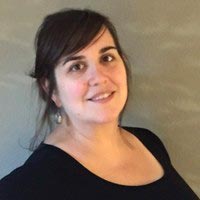 Heather Ebba Maib
Heather Ebba Maib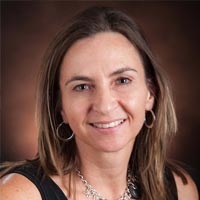 Laura Holyoke
Laura Holyoke
 Dan Ewart
Dan Ewart Stephen Miller
Stephen Miller Robert Perret
Robert Perret Lauren McCleary
Lauren McCleary Diane Prorak
Diane Prorak Perri Moreno
Perri Moreno Douglas Habib
Douglas Habib Steven Beyerlein
Steven Beyerlein

 Stacy Isenbarger
Stacy Isenbarger
 Diane Carter
Diane Carter
 Vanessa Sielert
Vanessa Sielert Spencer Martin
Spencer Martin
 John Crepeau
John Crepeau Mike Maughan
Mike Maughan Tonia Dousay
Tonia Dousay Diane Prorak
Diane Prorak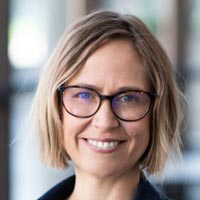 Sarah VanGundy
Sarah VanGundy Vanessa Botts
Vanessa Botts Otter App
Otter App Alyson Roy
Alyson Roy Dave Lien
Dave Lien Kenton Bird
Kenton Bird Ryanne Pilgeram
Ryanne Pilgeram Bob Stephens
Bob Stephens Hosted by Brian Smentkowski
Hosted by Brian Smentkowski